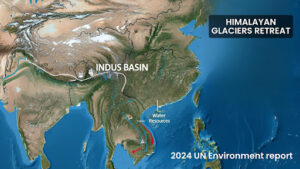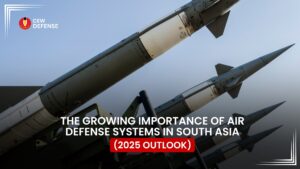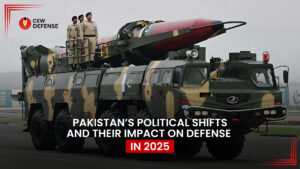Signed in 1960 through World Bank mediation, the Indus Waters Treaty (IWT) between India and Pakistan was once hailed as a landmark in environmental diplomacy. It divided the six rivers of the Indus Basin: the eastern rivers (Ravi, Beas, Sutlej) were allotted to India, and the western rivers (Indus, Jhelum, Chenab) to Pakistan. Designed to keep water issues separate from political conflicts, the treaty has remained operational through wars and tense periods. However, climate change, rising water demands, and shifting political landscapes now threaten the future of this agreement.
From Cooperation to Confrontation
Initially, the IWT was seen as a symbol of cooperation. Over time, its role has changed. Environmental diplomacy, which once guided the treaty, is now overshadowed by geopolitical calculations. Terrorist attacks on Indian soil and ongoing regional disputes have pushed India to reevaluate its water strategy.
Events such as the 2001 Indian Parliament attack, the 2008 Mumbai attacks, the 2016 Uri incident, and the 2019 Pulwama bombing intensified India’s stance. Following the Uri attack, Prime Minister Narendra Modi declared, “Blood and water cannot flow together.” This marked a turning point, as India began pausing treaty-related meetings and exploring its full rights over eastern rivers. In January 2023, India formally notified Pakistan through the World Bank, seeking changes to the treaty framework.
Pahalgam Attack and Operation Sindoor
The April 2025 terrorist attack in Pahalgam reignited tensions. In response, India launched Operation Sindoor, targeting alleged cross-border militant infrastructure. These developments further damaged bilateral trust and raised fears that water may become a weapon rather than a shared resource.
Strategic Shifts and Regional Risks
If India alters its commitment to the IWT, it could set a troubling precedent for other regions. India is a lower riparian country on the Brahmaputra River, which originates in China. China has already constructed dams and plans major projects like the Medog Hydropower Project. If India treats IWT as conditional, China might adopt a similar stance during future disputes.
Other dynamics add to the fragility:
- Afghanistan–Pakistan tensions over the Kabul River are rising. Afghanistan’s Mahipur, Naghlu, and proposed Shahtoot Dam (supported by India) are seen as threats by Pakistan.
- Iran and Afghanistan have long-standing issues over the Helmand River, particularly the drying Hamoun wetlands.
- Turkmenistan is closely monitoring these trends, fearing wider regional instability.

Environmental Diplomacy in the Age of Climate Crisis
Rising temperatures, melting glaciers, unpredictable monsoons, and growing populations are putting immense stress on South Asia’s water resources.
According to a 2024 UN Environment Programme report, the Himalayan glaciers feeding the Indus Basin are retreating at an average rate of 20 meters per year, threatening the long-term viability of water-sharing agreements like the Indus Waters Treaty.
Climate resilience must now be a core component of environmental diplomacy. Water agreements must evolve beyond Cold War-era politics to address today’s ecological realities. Including all stakeholders, especially local communities and scientific experts, can improve transparency, fairness, and long-term sustainability.
Conclusion: Cooperation Over Conflict
The Indus Waters Treaty remains one of the most successful examples of water diplomacy. But its relevance now depends on how India and Pakistan choose to navigate growing environmental and political challenges. Weaponizing water undermines not only bilateral relations but regional peace.
South Asia must shift toward climate-conscious, science-backed, and politically neutral water management. Reviving the spirit of the IWT with updated mechanisms for climate change, data sharing, and joint water projects could turn water from a flashpoint into a foundation for cooperation.







